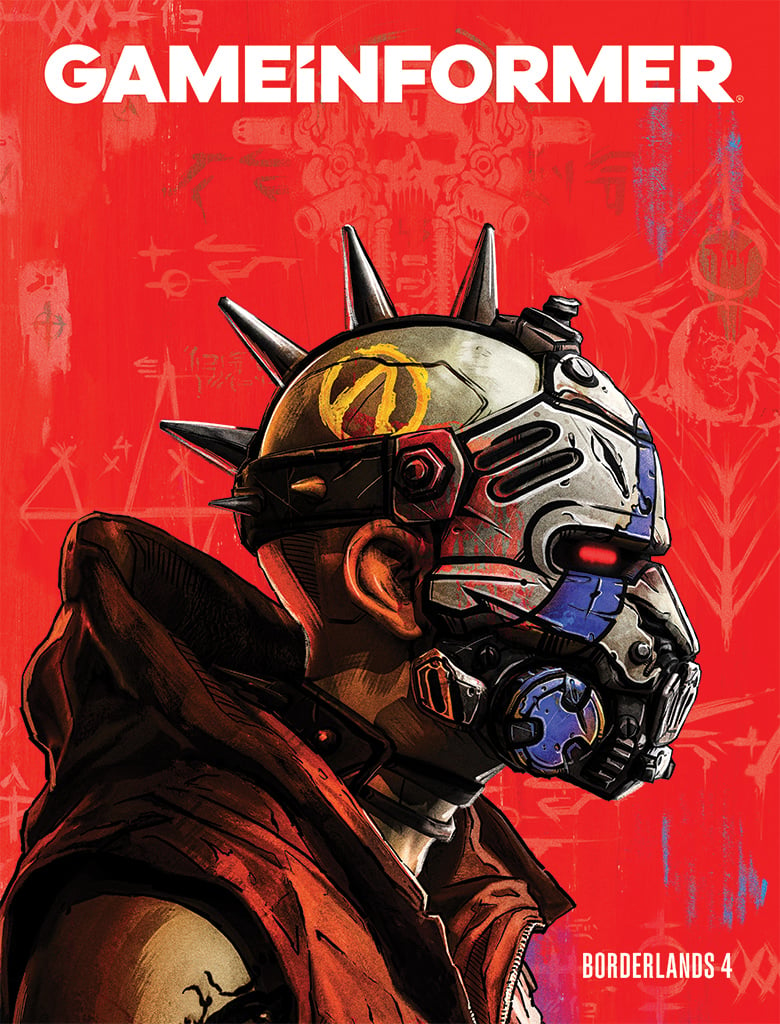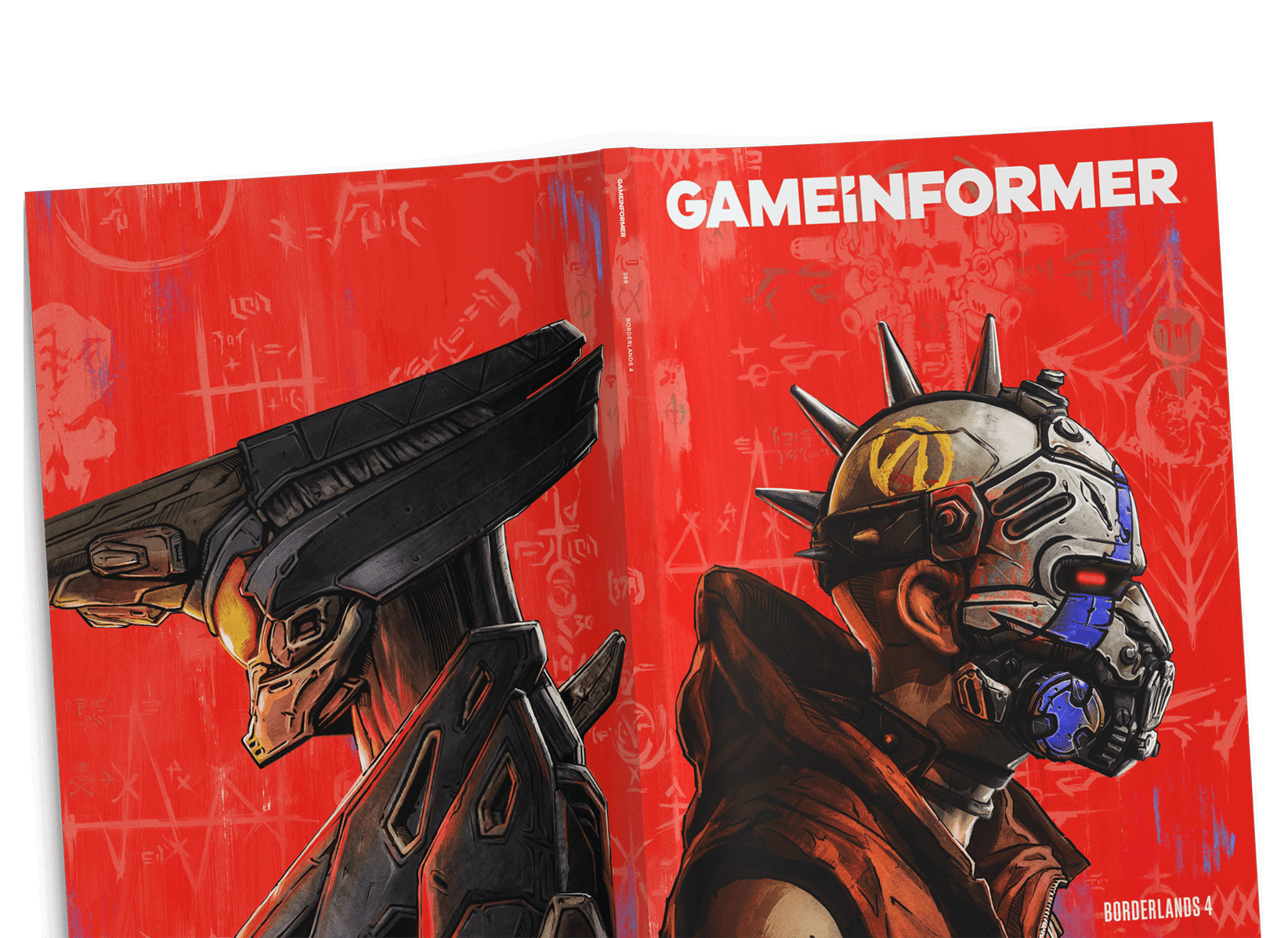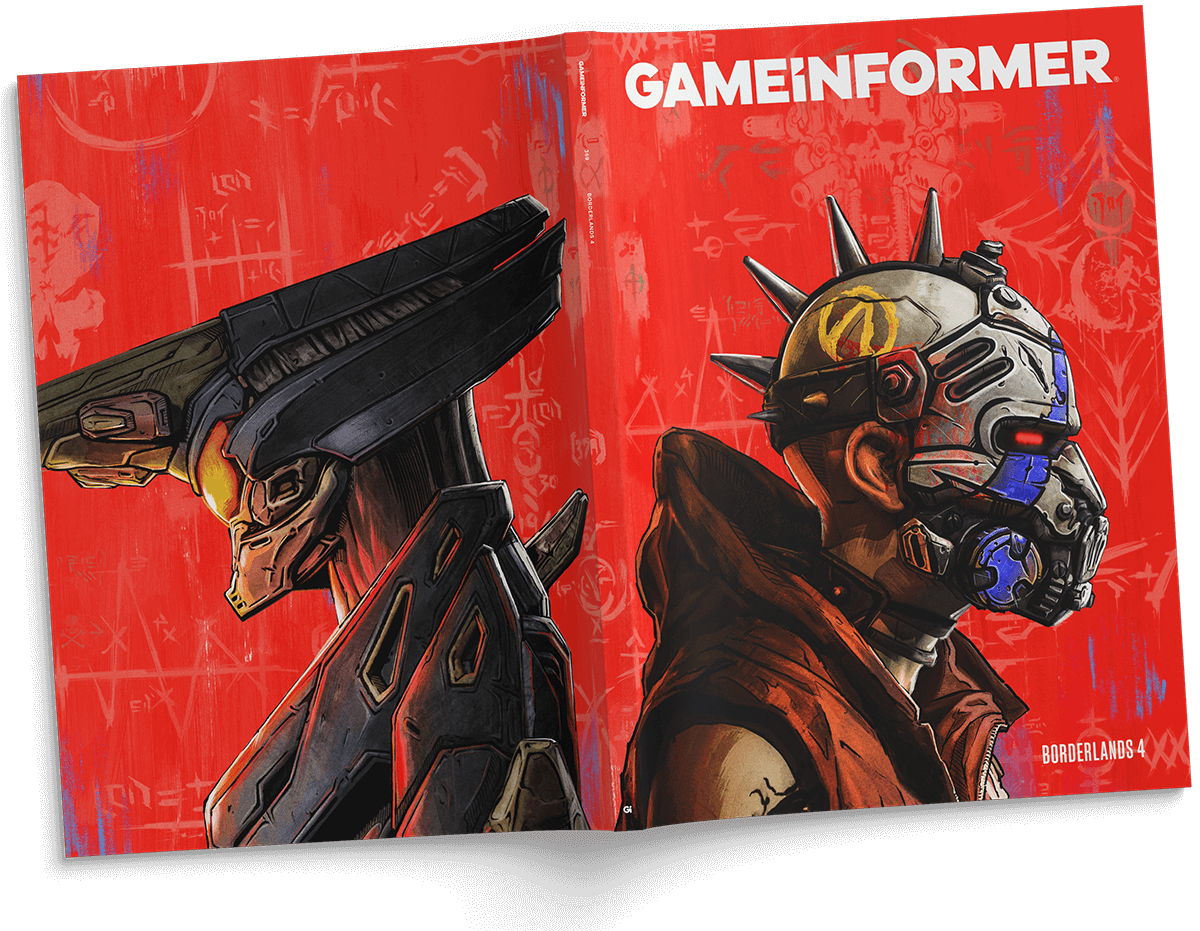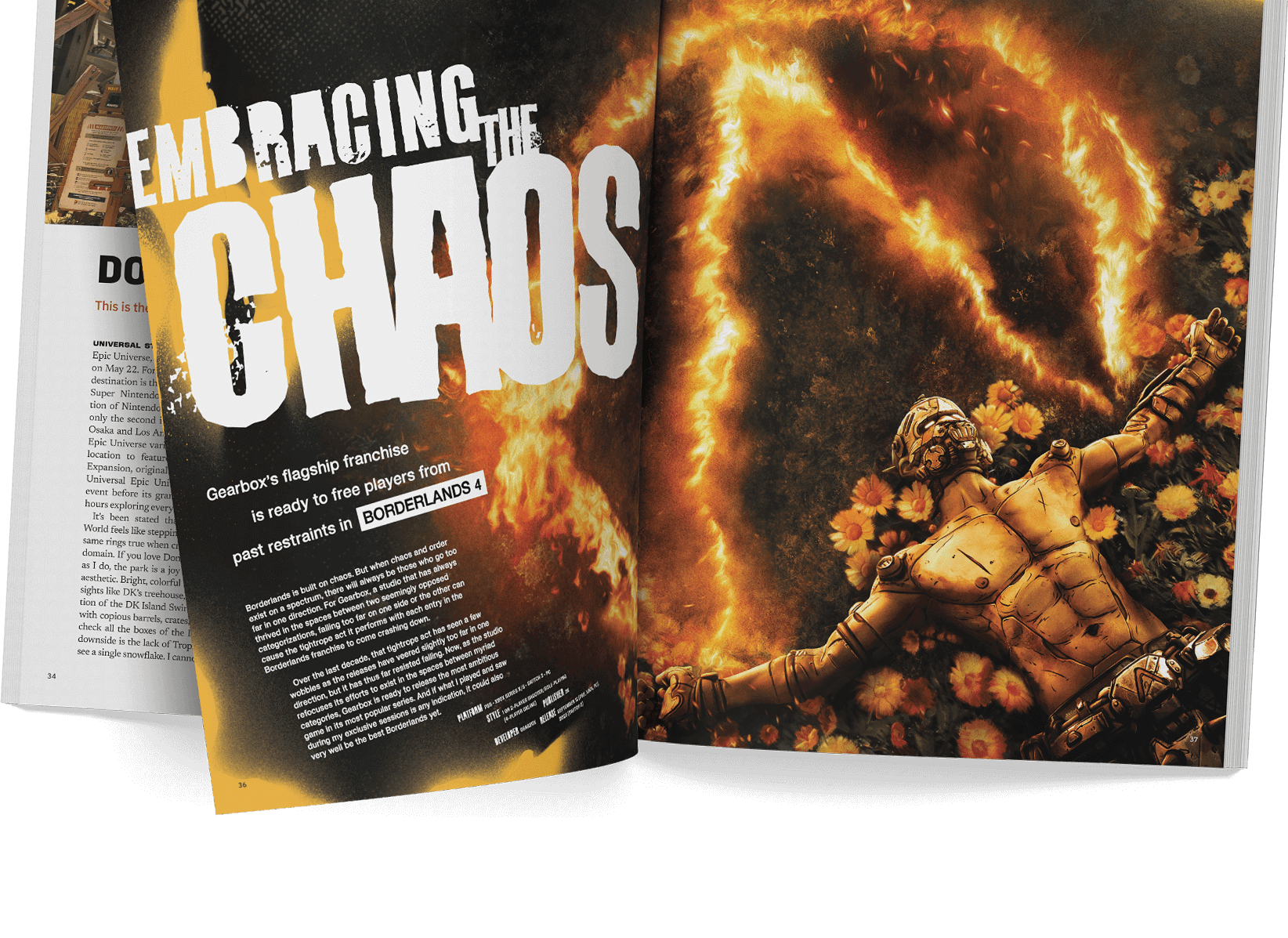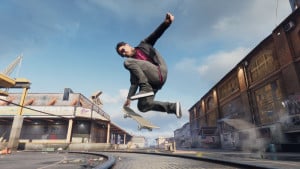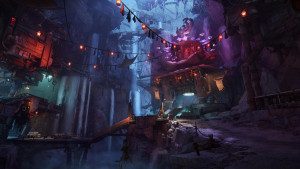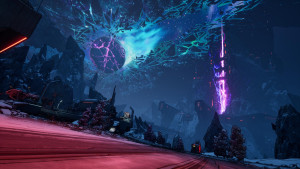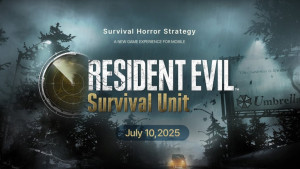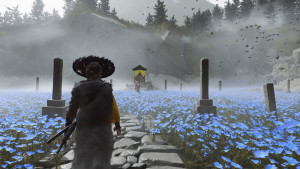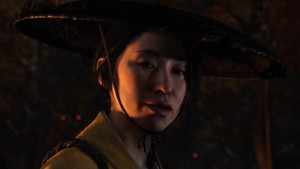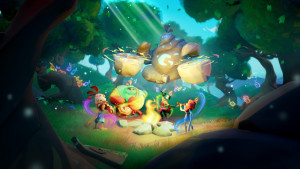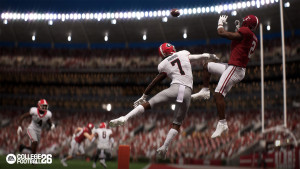Be the first to get Game Informer’s August Issue! Subscribe Now
Doom: A New Vision Of Hell
If you walk through a video game development studio, you'll likely run into a wall dedicated to concept art. Id Software has such a wall, but it looks out of place, almost like it was stolen from a heavy metal music label. Much of the wall's pieces, like the image above, looks like album covers for a band with an umlaut in its name.
"Rock 'n' roll was our inspiration for everything," says creative director Hugo Martin. "There is a lot of heavy metal in our hell, and that is intentional. When you look at the original Doom, we always said it looks like the kind of stuff a 15-year-old would draw on the back of his notebook during math class. We really wanted the world to look like that – to have a certain personality that would shine through in everything we did. So we have a lot of skulls; it's kind of over the top. A little bit of Castle Grayskull in there; it's very He-Man."
In previous Doom games, hell was what you would expect it to be – a place with darkened skies, mangled corpses, ritualistic iconography, and fire and blood dispersed liberally across the environment. Id's new take on hell debuted last summer at Bethesda Softworks' E3 showcase. The video revealed a much different version of hell than we've seen before. It's mountainous and immense in scale. Jagged rocks and rough terrain paint a menacing picture, but there's beauty here, too. Vibrant lightning dances in storm clouds high above the mountain and coats the terrain in a yellowish haze that keeps the surroundings well lit.
The demonic forces that occupy this land appear to be somewhat civilized too. Pathways tunneled into the rocky terrain deliver the belief that some of these foul beasts may have settlements here. This attention to detail shows us that id's artists thought about what life in hell might be like for its denizens.
But make no mistakes, this is still a terrible place to be. A closer inspection at the terrain reveals that the puddles of water are actually pools of blood, and the lighting on a nearby ridge is not that of a lantern, but a glowing satanic symbol that is likely going to summon something terrible. It's still a dark and dreary place, but there's life to it. Hell is different now.
When we visited id's headquarters last month for our February cover story, we were given the chance to play through a new level in hell called Titan's Realm. The first thing we see is the in-game version of the concept art above, a skull that appears to be screaming in agony, almost looking like it was partially consumed by the world itself. I immediately think this skull is from a statue, but a closer look reveals it's decaying, and was indeed once living. True to this level's name, this area was once occupied by skyscraper-sized titans.
"You get the sense something was living here," says game director Marty Stratton. "Something that was so ancient and so old and so massive that you have to question what realm you are in. It almost deepens the mystery of what hell is."
I ask Stratton if this is something the team is going to explore in Doom's narrative, and he says it isn't a focus, but if the player explores the area thoroughly, they'll find lore that fleshes out some of the mysteries.
I'm told that the space marine is back in hell for the second time at this point in the game, and that he's questing for an item called The Crucible. What that could be is anyone's guess.
I inch forward cautiously. After using the rocket launcher to mow down two cacodemons – floating spherical beings that almost look like they are moving in slow motion one second but are somehow directly on top of you the next – I learn the only path I can take is through the dead titan's skull. I admire the gruesome details inside its mouth for a few seconds and then plummet numerous stories down its dusty skeleton to an underground catacomb.

This area is a throwback of sorts to the exploration puzzles from the original Doom games. I find myself navigating chambers of various sizes to track down colored skull keys. These areas are rich in branching paths that lead to secrets and various points of interest. Since it is hell, some of these secrets can kill you, such as an opening and closing obelisk that can flatten you if you don't time your movement correctly. I find a couple of collectibles along the way, but id wasn't willing to fill me in on what purpose they serve, if they serve any at all.
Combat arenas are in greater abundance in Titan's Realm than they were in Resource Ops, perhaps a product of it being a later stage in the game, or hell being a more violent place. Although most of the rooms I enter are somewhat suffocating in design, and there's a surprising degree of vertical space to navigate. Rocky pathways can be used to drop down on adversaries, which consist of Mancubuses, Revenants, Hell Knights, Barons of Hell, and my favorite, Pinky Demons. While not quite as pink as they were a decade ago, Pinky Demons charge at you like a bull, and almost always made me backpedal evasively. I also ran headlong into a Spectre, a semi-invisible Pinky Demon that can be hard to pick up, especially when the rockets start flying.
The most menacing foe I encounter is a Summoner. Standing in at roughly human height, this robed being creates portals that bring additional troops to the fray. I made it a priority to fell this enemy type as quickly as I could, but keeping up with it is difficult, as it can vanish in smoke and reappear elsewhere.
The combat encounters in hell are magnitudes more challenging than they were in Resource Ops, but are just as entertaining. Id gave us access to almost every weapon (something Statton says the player should have at this point in the game anyway), and I found myself leaning heavily on the chaingun to thin the heard. Through a mod, the chaingun can transform into a three-barreled turret that absolutely eviscerates everything in front of it.
Hell's strange blend of technology also comes into play in the combat arenas. Energy-powered jump pads can be used to gain quick access to higher sections of arenas. Teleporters are also present in some areas. These environment-based tools expand the strategies players can deploy, and again favor Doom's fast-paced approach to combat. They also open up exploration options that can lead to new weapon mods and upgrades.
Id didn't want to dive too much into the customization options, but we were told Doom features three tiers of upgrades for the space marine. White chests found in the world contain items called argent cells that allow you to increase your ammo, armor, and health capabilities. The second tier of upgrades are enhancement tokens which are usually found on fallen elite guards. The tokens improve general capability categories such as agility and equipment efficiency. The final upgrade type is a rune, which can be combined to tweak your skills to particular play styles. If you die often, a rune can be tapped to activate a saving throw that slows time when your health dips below 25 percent.
When stacked up next to Resource Ops, hell has a different flow to it. I felt like I had more strategies to play with and more ways to escape in the arenas. This could just be that this particular hell level takes place well after Resource Ops, but Stratton says hell is its own beast and isn't just a palette swap.
Our Doom coverage doesn't end with the 12-page cover story. Return to our hub throughout the month for more information on the single-player campaign, arena multiplayer, and the SnapMap creation engine. You can access the hub by clicking on the banner below.
